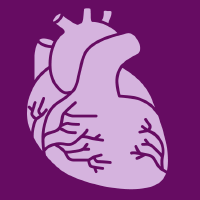Topic Menu
► Topic MenuTopic Editors

Molecular and Cellular Mechanisms of Diseases: Heart Disease
Topic Information
Dear Colleagues,
Heart failure is still a leading cause of mortality worldwide. Cardiomyocytes contribute to heart failure by losing the ability to generate sufficient force to pump blood into circulation. To improve the current treatment options in cardiology, it is important to have a better understanding of the biological behavior of cardiomyocytes. The function of these cells cannot be completely understood independently of the interaction with surrounding cells, i.e., cardiac fibroblasts and vascular cells. Nevertheless, cardiomyocytes are the cells that must generate heart work. They can modify parts of their electromechanical coupling machinery, electrometabolic coupling, or increase in size via hypertrophy. However, hypertrophy can be either adaptive or maladaptive and the transition from the one into the other type of hypertrophy is not clearly understood. Processes dealing with metabolism, electromechanical coupling, and electrophysiological aspects are among the processes that need to be addressed and understood in their molecular fine regulation in order to improve treatment regimes. This Topic aims to summarize the current understanding of the process of developing heart failure with a focus on the force-generating cell, the cardiomyocyte.
Prof. Dr. Klaus-Dieter Schlüter
Prof. Dr. Pasi Tavi
Prof. Dr. Ebru Arioglu-Inan
Topic Editors
Keywords
- cardiac metabolism
- electromechanical coupling
- regulation of growth and cell death in the heart
- right heart failure
- electrophysiological aspects of cardiomyocytes
Participating Journals
| Journal Name | Impact Factor | CiteScore | Launched Year | First Decision (median) | APC |
|---|---|---|---|---|---|

Biomolecules
|
5.5 | 8.3 | 2011 | 16.9 Days | CHF 2700 |

Cells
|
6.0 | 9.0 | 2012 | 16.6 Days | CHF 2700 |

Diseases
|
3.7 | - | 2013 | 18.8 Days | CHF 1800 |

International Journal of Molecular Sciences
|
5.6 | 7.8 | 2000 | 16.3 Days | CHF 2900 |

Journal of Molecular Pathology
|
- | - | 2020 | 24.9 Days | CHF 1000 |

Organoids
|
- | - | 2022 | 15.0 days * | CHF 1000 |

Journal of Cardiovascular Development and Disease
|
2.4 | 2.4 | 2014 | 20.3 Days | CHF 2700 |
* Median value for all MDPI journals in the second half of 2023.

MDPI Topics is cooperating with Preprints.org and has built a direct connection between MDPI journals and Preprints.org. Authors are encouraged to enjoy the benefits by posting a preprint at Preprints.org prior to publication:
- Immediately share your ideas ahead of publication and establish your research priority;
- Protect your idea from being stolen with this time-stamped preprint article;
- Enhance the exposure and impact of your research;
- Receive feedback from your peers in advance;
- Have it indexed in Web of Science (Preprint Citation Index), Google Scholar, Crossref, SHARE, PrePubMed, Scilit and Europe PMC.


